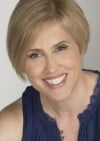place and focal length
My thesis manuscript readers said that if they lived in Ohio, say, instead of Miami, they would not have
a clear enough idea of the different parts of south Florida in which I have
lived over the past 12 years. Each
neighborhood, each city, each zip code, has its own distinct personality,
flavor, vibe, and energy. The
significance of moving from one to another would not be lost on a south Florida
resident. But city names alone do
not explain the significance to readers who don’t live here.
So to write about “place” means to capture this personality,
flavor, vibe, energy. In both
narrative nonfiction and fiction, this capturing is also part of character
development and plot movement.
Why did I struggle with place? Maybe because I wasn’t doing what I just said about capturing
a vibe. Instead, I was thinking of
“describing,” or worse still, laying out demographics, cold facts about
population and census data. And
that was boring, so I rushed through it, thinking no one would want to read it
any more than I wanted to write it. And I was right, but I was still stuck without enough “place.”
I’m observant but there’s a glitch: I am observant of small
things rather than big things. I
like a mosaic. And I didn’t spend
enough words in my thesis to put the mosaic together.
Here’s what I’m learning about the way this works:
Hoping to take better photographs to use online, I took (and highly recommend) a
“Point and Shoot” teleclass with Sheila Finkelstein in January. I now
know more about my digital camera, and take better pictures, and am more
observant all the time.
Sheila quoted Twyla Tharp’s The Creative Habit: Learn
It and Use It For Life:
I believe that we all have strands of creative code hard-wired into our imaginations. . . . They determine the forms we work in,
the stories we tell, and how we tell them. . . . I call it DNA; you may think
of it as your creative hard-wiring or personality. When I apply a critic’s temperament to myself, to see if I’m
being true to my DNA, I often think in terms of focal length, like that of a
camera lens. All of us find
comfort in seeing the world either from a great distance, at arm’s length, or
in close-up. . . .
Rare is the painter who is equally adept at miniatures and epic series,
or the writer who is at home in both historical sagas and finely observed short
stories. . . . Focal length
doesn’t only apply to photographers.
It applies to any artist. . . .[She describes the writing of Raymond Chandler:] No long-distance
musings on the state of the world.
No middle-distance group shots.
Just a steady stream of details, piling one on top of the other, until a
character or scene takes shape and a vivid picture emerges.
I will be piling on the details, small and potentially insignificant though they may seem, until I’ve captured the vibe of the place. The drip-sand-castle method is the way I write everything else–why would place be any different?
What is your focal length, in writing and in your life?





Comments are closed